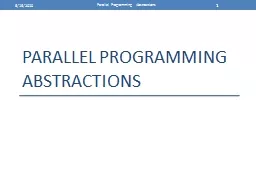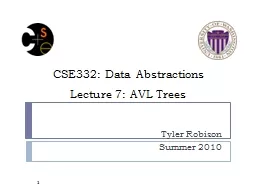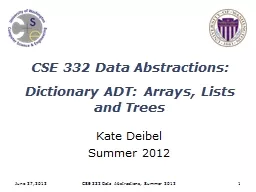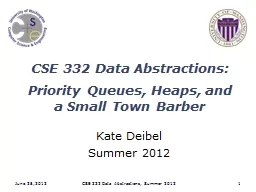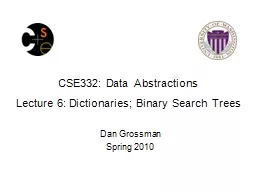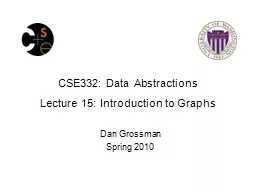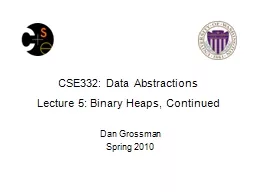PPT-CSE332: Data Abstractions
Author : briana-ranney | Published Date : 2016-12-11
Lecture 21 Amortized Analysis Dan Grossman Spring 2010 Amortized Recall our plainold stack implemented as an array that doubles its size if it runs out of room
Presentation Embed Code
Download Presentation
Download Presentation The PPT/PDF document "CSE332: Data Abstractions" is the property of its rightful owner. Permission is granted to download and print the materials on this website for personal, non-commercial use only, and to display it on your personal computer provided you do not modify the materials and that you retain all copyright notices contained in the materials. By downloading content from our website, you accept the terms of this agreement.
CSE332: Data Abstractions: Transcript
Download Rules Of Document
"CSE332: Data Abstractions"The content belongs to its owner. You may download and print it for personal use, without modification, and keep all copyright notices. By downloading, you agree to these terms.
Related Documents




